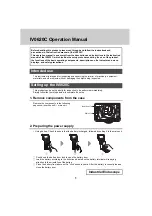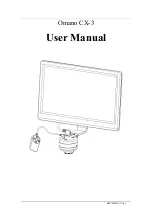
Hazardous Area Operation
Purge Operation
Thermo Fisher Scientific
Prima PRO & Sentinel PRO Mass Spectrometers User Guide
A-13
Port 1 must have a non hazardous and pressurised sample
(e.g. instrument air) permanently connected so that the
containment system is rapidly purged with this non hazardous
gas. The operator is informed via an alarm that the action has
taken place and normal sampling will have ceased. When the
fault is corrected and vacuum re-established, normal
sampling can resume.
Due to the reduced pressure in the sample loop a connection from the
vacuum ejector to the flow sensor bracket (as used on the Prima PRO
Ex) is no longer necessary. However, this suction flow is still used to
assist in the initial purging of internal volumes in the turbo pump
controller, signal amplifier box, cold cathode gauge, and RMS
stepper motor.
The purge system and sample containment system have been fully
factory tested and should not require adjustment during the initial
commissioning period. In order to maintain safe operation of the
overall system, however, the integrity of the sample containment
system should be checked periodically, at least annually, as part of a
general preventative maintenance procedure.
Leakage Dilution Test (Prima PRO Ex)
The suction flow rate generated by the vacuum ejector should be
checked. Disconnect the red tube (suction line) from the
connector on the side of the RMS sample tube bracket. Check the
suction flow rate at the free end of the tube using a suitable flow
meter. The flow rate should be > 5 l/min.
Vacuum Switch Test (Sentinel PRO Ex)
The vacuum switch should be tested by disconnecting a line in
the sample loop at the point where the loop exits the RMS
(flowing towards the inlet probe assembly). Verify that the RMS
switches to the safe inlet.
Inspection
The RMS rotary seals should be removed for inspection. It is
recommended that spare seals are available in the event that the
old ones are damaged before or during removal. Follow the
instructions in
“Appendix C: Technical Description: Inlet”
. Note
that the sample return seal is not important from a safety point of
view – failure would only result in an inaccurate sample flow
reading.
Leak Testing
Inspection and
Testing
















































